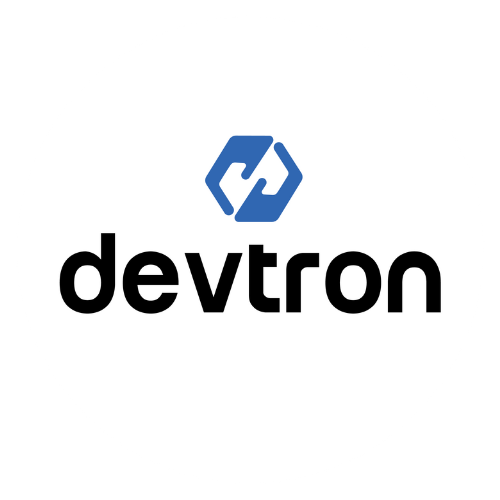In the last decade, software development has undergone a massive shift with containerization, microservices, and continuous delivery becoming the new norm. Kubernetes, the de facto container orchestration platform, is at the heart of this transformation. But managing Kubernetes is not for the faint of heart. Performance bottlenecks, visibility challenges, and troubleshooting complexities can overwhelm even seasoned DevOps teams. This is where Devtron, an open-source Kubernetes-native DevOps platform, comes in.
Devtron aims to simplify Kubernetes operations, bring visibility, automation, and control to development and deployment workflows. But can it really help DevOps teams solve the performance and troubleshooting problems in Kubernetes environments?
This article dives deep into that question, focusing on Devtron’s integrations with monitoring tools like Prometheus and Grafana, its support for observability best practices, and how its built-in features support proactive performance management.
The performance and troubleshooting dilemma in Kubernetes
While Kubernetes offers immense scalability and flexibility, it also introduces layers of abstraction that can make debugging and performance monitoring harder. Pods can crash silently, services can fail due to misconfigurations, and performance degradation can go unnoticed until it affects end users.
Common challenges DevOps teams face in Kubernetes environments are:
- Limited visibility across microservices.
- Correlating logs, metrics, and events.
- Alert fatigue due to noisy or poorly configured monitoring.
- Time-consuming root cause analysis.
- Reactive rather than proactive incident response.
These challenges highlight the need for tools that provide deep observability and contextual information tailored for Kubernetes.
What is Devtron, and how does it support observability?
Devtron is a one-stop solution for managing Kubernetes-based applications. It provides a graphical interface for CI/CD, application deployment, and operational monitoring. Built with Kubernetes-native principles, Devtron doesn’t hide Kubernetes complexities—it makes them manageable.
One of Devtron’s strengths is its observability layer. It integrates with industry-standard tools like Prometheus, Grafana, and Loki to provide a unified view of metrics, logs, and events. But more importantly, it contextualizes this observability data within the lifecycle of an application.
Instead of jumping between dashboards and logs across different systems, DevOps teams can monitor performance and diagnose issues from within Devtron’s unified interface. This reduces cognitive overhead and accelerates time-to-resolution.
Integration with Prometheus and Grafana for real-time monitoring
Devtron doesn’t reinvent the wheel when it comes to monitoring. Instead, it builds on top of proven open-source tools and integrates them seamlessly into its platform. These integrations eliminate context switching by providing immediate access to dashboards, correlating metrics with deployments and pod lifecycles, and enabling real-time alerting on Kubernetes and application telemetry all within a single interface.
Prometheus integration
Devtron uses Prometheus to collect time-series metrics from Kubernetes components, applications, and infrastructure. Once integrated, Devtron can show CPU and memory usage, request latency, and error rates. DevOps engineers can configure alert rules based on Prometheus expressions (PromQL) and get real-time alerts when thresholds are breached.
Grafana integration
For visualization, Devtron integrates with Grafana dashboards. This allows teams to monitor custom application-level metrics and Kubernetes cluster health in real-time. Dashboards are accessible directly within Devtron’s UI, and teams can even correlate metrics with deployment timelines to identify performance regressions introduced by new code changes.
By embedding Prometheus and Grafana into its core, Devtron helps teams move from reactive to proactive monitoring.
Best practices for logging and monitoring Kubernetes clusters
Even with powerful tools, poor observability practices can limit their effectiveness. In some instances, Devtron enforces best practices for monitoring and logging in Kubernetes, while also encouraging them.
Here are some guidelines DevOps teams should follow when setting up logging and monitoring with Devtron:
- Centralize logs using Loki: Devtron integrates with Grafana Loki for log aggregation. This allows teams to search logs across multiple pods and namespaces from a single interface. Using labels, logs can be filtered by application, environment, or container to speed up investigations.
- Use structured logs: Logs should be in structured formats like JSON to make it easy to parse and filter in Loki. Devtron-compatible apps often include sidecar containers or agents that help normalize log formats.
- Define service-level objectives (SLOs): Instead of alerting on every anomaly, define meaningful SLOs like error budgets or latency thresholds. Devtron supports custom alert rules based on Prometheus metrics aligned with SLOs.
- Instrument code with OpenTelemetry: Devtron works well with apps that export telemetry using OpenTelemetry standards. This makes it easier to collect detailed traces and metrics without vendor lock-in.
- Automate alert tuning: Don’t get alert fatigue by continuously tuning alert thresholds. Apply Devtron's deployment insights to optimize alert conditions over time by analyzing application behavior.
- Log retention policies: Define log retention periods based on regulatory and operational needs. Devtron lets you configure storage backends so logs aren’t lost due to ephemeral pod lifecycles.
These will give you more visibility and foundation for automated issue detection and self-healing.
How Devtron enhances troubleshooting and root cause analysis
The best part of Devtron is the ability to correlate monitoring data with application lifecycle events so you can troubleshoot faster and more accurately. No more switching between tools or piecing together timelines manually. DevOps teams get a single view of what happened, when, and why.
Devtron links metrics and logs to specific deployments so you can detect if a release introduced regressions like memory leaks or latency spikes. Teams can quickly identify the deployment that caused the issue and take action, shortening the feedback loop.
Real-time visibility into pod health and Kubernetes events (restarts, OOM kills, crash loops) is surfaced along with relevant logs and metrics. Full-text log search across all pods, with filtering by container, namespace, or time, makes root cause analysis without using kubectl easy.
Devtron also helps visualize service-to-service communication so you can trace issues across microservices and pinpoint upstream or downstream failures. Custom Grafana dashboards for different environments (dev, staging, production) ensure metrics are contextually relevant and issues are isolated correctly.
These features reduce mean time to detect (MTTD) and mean time to resolve (MTTR) so you can respond to issues proactively and with confidence.
Devtron as a strategic observability layer for Kubernetes
Kubernetes observability is a big, complex problem that requires the right mix of tools, practices, and platform-level support. Devtron doesn’t just add observability on top, it weaves it into the application lifecycle management.
From deep Prometheus integration and real-time log aggregation to deployment-aware dashboards and rapid root cause analysis, Devtron enables DevOps teams to manage performance, prevent downtime, and resolve issues faster.






